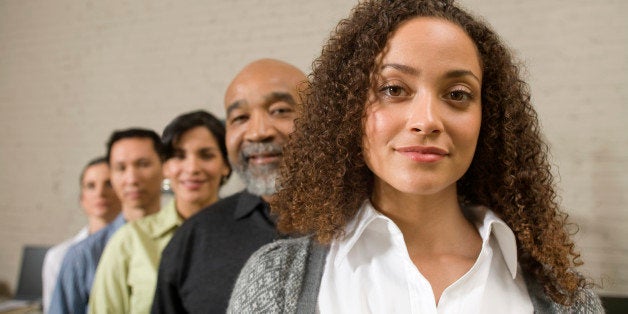
The landscape of the United States is rapidly changing which is evidenced by the emergence of a rich multicultural tapestry. Our workplaces are more diverse and our communities are becoming increasingly diverse. Despite these demographic shifts, organizational culture and practices may limit the ability for all members of a team to thrive. This is a missed opportunity to engage others in fostering new ways of thinking, improving service delivery in the business world, promoting critical thinking in higher education, and offering holistic care in the medical field. Recent research has demonstrated how diversity makes us brighter by opening our eyes to new the dimensions of thinking, creating, and building. This is the value-added of diversity and inclusion.
Diversity is the thread that weaves our organizations and communities together.
My favorite quote related to diversity is from the late Dr. Maya Angelou, "We should know that diversity makes for a rich tapestry and we must understand that all threads of the tapestry are equal in value no matter what their color." This quote reminds each of us to embrace our differences and cultivates the interconnectedness of the human experience.
Diversity is needed to bring together the brightest minds to create solutions to business, economic and social challenges of the 21st century and beyond.
The foundation of entrepreneurship is: we see a problem, we create a solution. The essential operative word is "we." Imagine if we applied the same principles to addressing the pressing social justice issues of our time. Together, we can create solutions from eliminating the spread of HIV and AIDS to creating access to a quality education. The challenge is to bring together people with diverse professional backgrounds, life experiences, and perspectives to problem solve together. This is innovation at its best. A prime example of this type of innovation is the work of the Kirwan Institute for the Study of Race and Ethnicity. When I interviewed former director of the Kirwan Institute, john a. powell, he emphasized the importance of striving for the realization of a vision of fairness, inclusiveness, and equity for all. powell convened professionals from all sectors to unite in this pursuit of social justice. He created a participatory leadership model which drew upon the expertise of sociologists, economists, demographers, and lawyers and laid the foundation of transformational thinking.
Transformational thinking requires creativity, vision, and persistence. Transformative approaches restructure the very institutions and inter-institutional relationships that result in inequalities. Transformative solutions are those that produce sustainable, significant changes in society.
~john a. powell
Diversity and Inclusion create an atmosphere where people come together and exchange ideas from diverse perspectives- life experience, cultural backgrounds. It empowers teams to see through the eyes of ingenuity and creativity.
It is tempting to see through the world through one lens- our own. However, this is one dimensional and offers only the perspective of what we individually "know" or have experienced. This perspective overlooks the fact that knowledge is a collective process of engagement. According to Paulo Freire, "knowledge emerges only through invention and re-invention, through the restless, impatient, continuing, hopeful inquiry human beings pursue in the world, with the world, and with each other."
Through learning, we see the world through a new lens, provides new insights, and new ways of thinking.
Innovation without Diversity and Inclusion is bound to go off course, since diversity is critical to advancing a robust exchange of ideas, supporting creative problem solving and promoting the common good.
I often remind my students that we are one body with many members. The body represents our shared vision of building a more just world. "For the body is not one member, but many. If the foot says, 'Because I am not a hand, I am not a part of the body,' it is not for this reason any the less a part of the body" as outlined in I Corinthians 12:14--15.
Leaders recognize each member of a team is integral to the success of the collective. Can you have a Super Bowl winning team without a quarterback, wide receiver, and linebacker? Each plays essential roles in offensive and defensive strategies. The same is true for organizations where each individual can contribute to the success of the team by effectively leveraging their strengths, seeing through the lens of ingenuity, and engaging in creative problem solving.
Now is the time to re-imagine diversity and inclusion. We must recognize the value-added of diversity and inclusion by building a more inclusive society through the transformation of our public spaces, whether it be our schoolhouses, church houses, or the people's house (government/legislature). Through this transformation, we can build a more just and equitable world.
